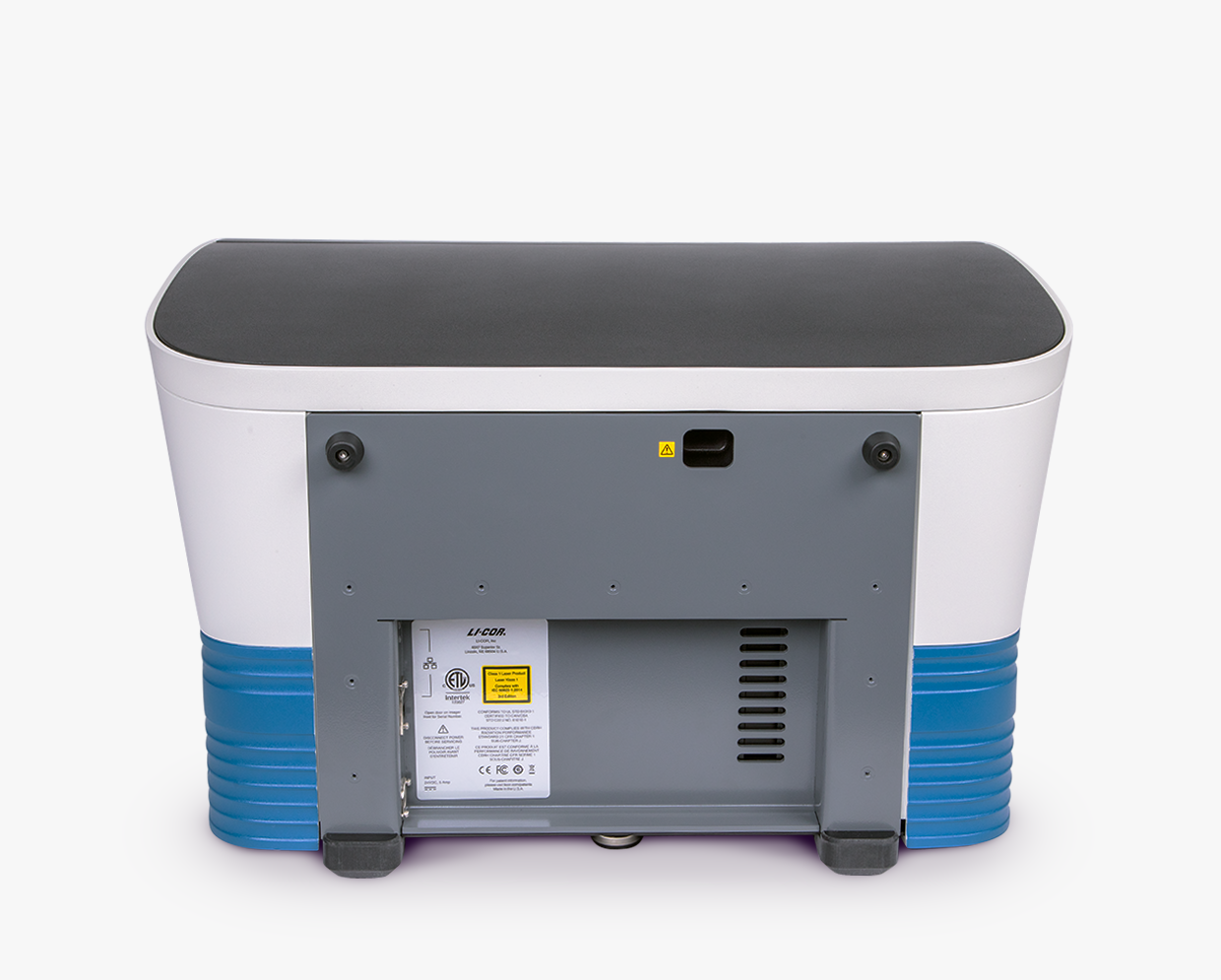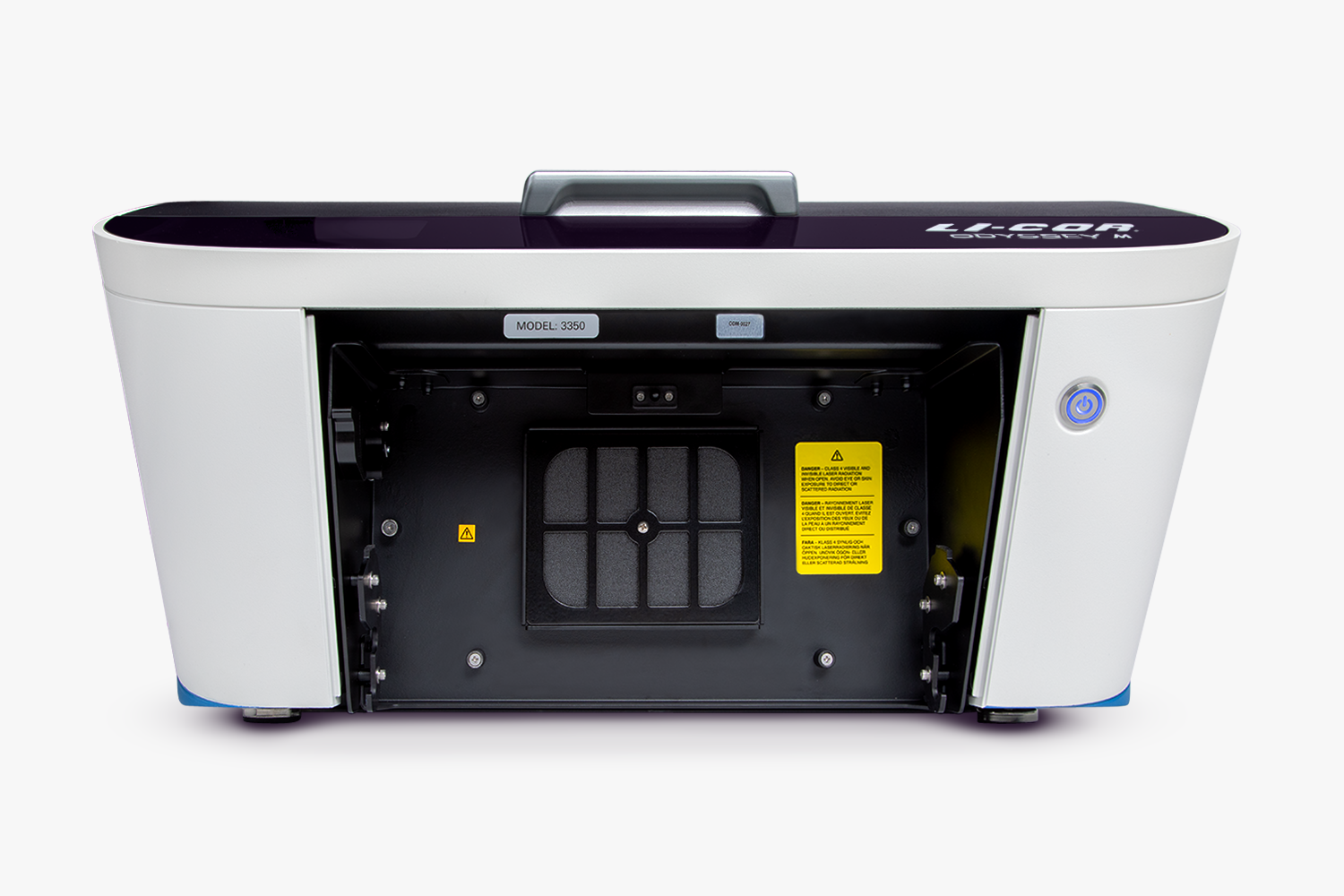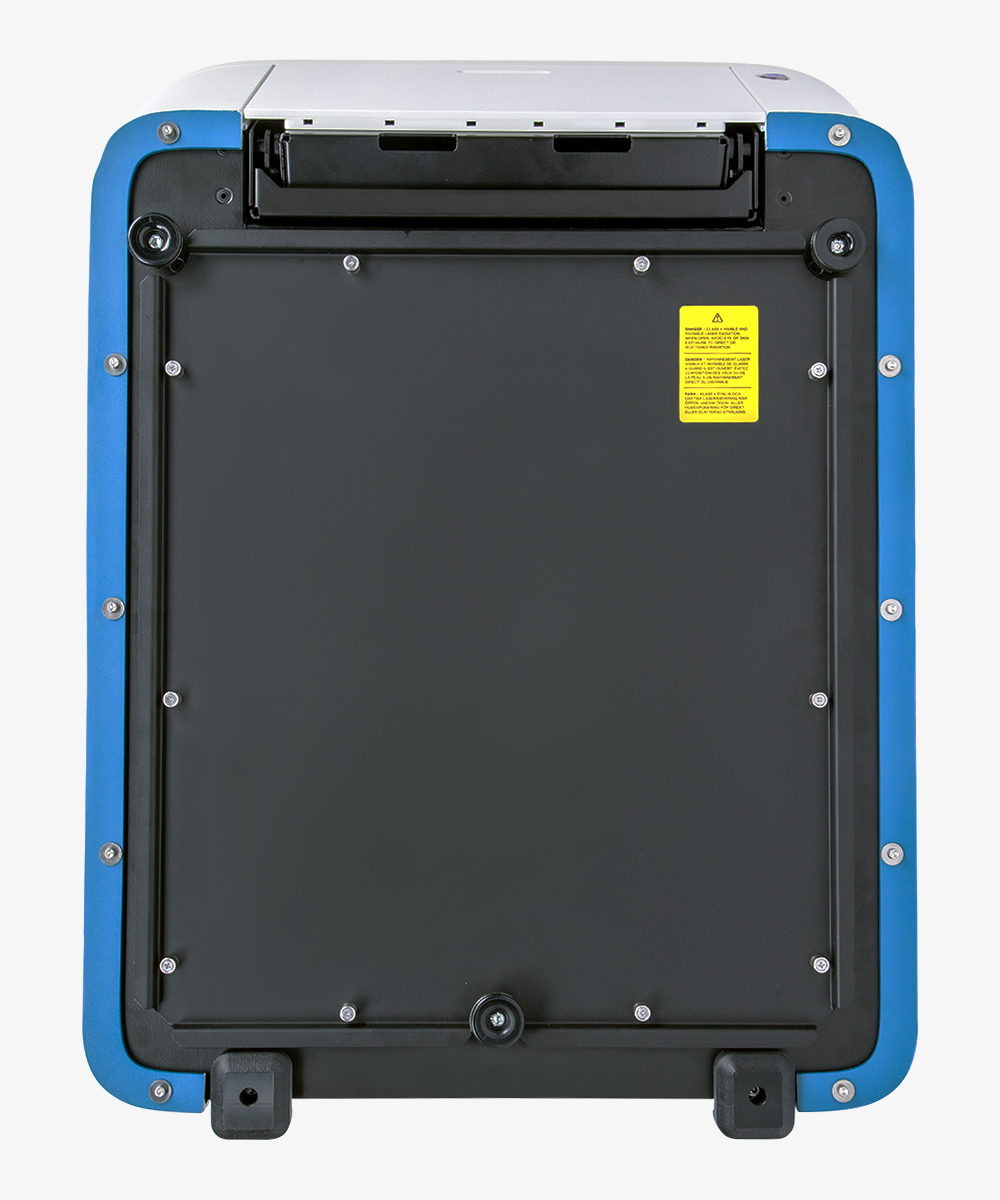Safety
Safety Considerations
Intended Use of the Odyssey M Imager
The Odyssey M provides reliable data for membranes, plate-based assays, slides, nucleic acid gels, and protein gels. The Odyssey M is versatile and can capture assays in 19 channels, including white light, luminescence (bioluminescence and chemiluminescence), and fluorescence (near-infrared and visible).
Odyssey M Model Numbers (3340 and 3350)
Odyssey M Model 3350 and Odyssey M Model 3340 are the same, except that Odyssey M Model 3350 contains hardware that allows it to image chemiluminescence. See Imaging System Specifications for details.
Laser Safety
The Center for Devices and Radiological Health (CDRH) was established in October 1982, by the U.S. Food and Drug Administration (FDA) to protect the public health in the fields of medical devices and radiological health.
Manufacturers of products subject to performance standards under the Radiation Control for Health and Safety Act of 1968 are required to furnish various reports to the CDRH.
The Odyssey M is certified as a Class I laser product. This means that hazardous laser radiation is not emitted outside the instrument. Radiation emitted inside the Odyssey M is confined within protective housings and external covers. A series of safety interlocks ensures that the laser beam cannot escape during any phase of user operation.
The CDRH implemented regulations for laser products on August 1, 1976 (CDRH radiation performance standard 21, Code of Federal Regulations Chapter 1, Subchapter J). Compliance for products marketed in the United States is mandatory. The label that must be attached to laser products marketed in the United States is illustrated in Figure 2. and is located on the rear panel of the Odyssey M, indicating compliance with CDRH regulations.
WARNING: Use of controls or adjustments or performance of procedures other than those specified herein may result in hazardous radiation exposure.
AVERTISSEMENT: L'utilisation des commandes ou le réglage ou la performance des procédures autrement qu'il a été indiqué dams le présent texte peut résulter en de dangereuses expositions aux radiations.
The manufacturer label is illustrated in Figure 2. and is also on the rear panel of the instrument.
The Odyssey M Near-Infrared Imaging System contains four lasers; one emitting at 488 nm, 520 nm, 685 nm, and 785 nm. The lasers emit visible and invisible laser radiation - avoid eye or skin exposure to direct or scattered radiation. Laser radiation is emitted out of the top of the Odyssey M microscope, up through the scan glass. Because the microscope moves in both planes relative to the glass scanning surface, laser radiation could be focused at any position on this scanning surface. Safety interlocks (described below) automatically turn the lasers off when the Odyssey M lids are opened.
Labels
The labels shown in Figure 1 and Figure 2 are affixed to the Odyssey M case.
 |  |
Imager Label Locations



Safety Interlocks
The Odyssey M Imager has safety interlocks that prevent access to the lasers, LEDs, and moving parts, by disabling these hazards when the front or rear lid is opened.
Do not attempt to defeat these interlocks.
Chemical Safety
LICORbio recommends that all biochemicals be handled carefully, and that safe laboratory procedures be followed at all times. Be aware of the hazards associated with any chemical before you begin work.
The LI‑COR Odyssey M should not be used with any radioactive materials.